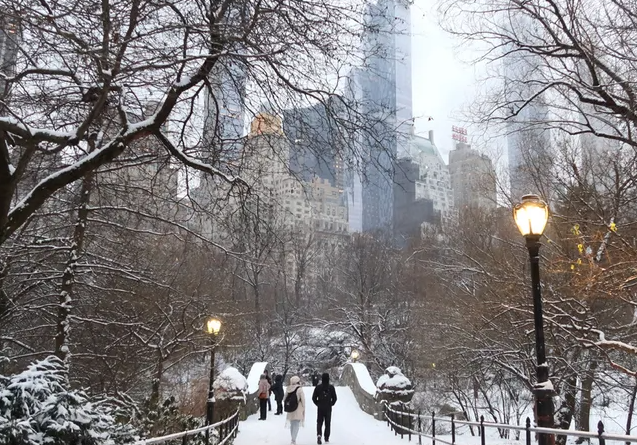After experiencing a warmer-than-usual winter last year, New York City is gearing up for a shift in weather patterns. Meteorologists, including Nick Gregory of FOX 5 NY, anticipate that a developing La Niña will likely influence this winter’s weather conditions. The National Oceanic and Atmospheric Administration (NOAA) has also provided insights on what to expect.
The Winter Solstice and La Niña Explained
Winter officially begins in the Northern Hemisphere on December 21, marked by the winter solstice, which brings the shortest day and longest night of the year.
La Niña occurs when the Pacific Ocean’s surface temperatures drop below normal, impacting global weather trends. This phenomenon typically results in drier and warmer conditions in the southern U.S., while the Great Lakes and parts of the Northeast experience cooler and wetter weather.
Gregory explained, “A La Niña pattern can lead to above-average temperatures for NYC and at or just above average snowfall.” Past La Niña winters have often brought strong nor’easters and blizzards, making this year’s forecast particularly interesting.
However, the specific impact of this year’s La Niña on the Tri-State area remains uncertain. It is expected to be a weak event that may only persist until early spring. “The upcoming La Niña is forecasted to be a rather weak one, which means it may produce the characteristic effects of a more moderate La Niña,” Gregory noted.
Nor’easter Predictions and Snowfall Estimates
As for the likelihood of nor’easters this winter, Gregory emphasized, “NYC will always have a nor’easter in the winter.” The main concern will be the temperature during these storms. A weak La Niña could create a precarious balance between rain and snow across New York City and its nearby suburbs.
In terms of snowfall, Gregory estimates that the city could see about 20 inches this winter, which is below the typical average of 28 inches. “This winter is likely to be warmer than usual, and there will be more snow than last year—between 18 and 23 inches,” he said, although this is still less than the historical average.
The lower Hudson Valley may experience slightly more snow, with accumulations ranging from 20 to 25 inches, while areas further north are expected to receive even greater amounts. Along the coast, winter could bring a mix of rain and snow.
Also read: IRS Announces New Tax Brackets for 2025 and Social Security COLA – How They Will Affect New York Residents
Historically, the first measurable snowfall in the NYC area tends to occur around December 13. Notably, the earliest recorded measurable snow was on October 29, 2011, when 2.9 inches fell just before Halloween.
Regional and National Winter Outlooks
According to NOAA’s winter outlook, the northern U.S. is anticipated to be wetter than usual, particularly in the Great Lakes region, which may see colder temperatures and increased precipitation. In contrast, the southern U.S. is likely to experience a warmer and drier winter.
For the Tri-State area, these trends may result in a continuous struggle between rain and snow throughout the season, especially if La Niña remains weak.
The Old Farmer’s Almanac predicts a “gentler-than-normal season” for the central Northeast, indicating less severe winter conditions. For the Interstate 95 corridor, which includes the Tri-State area, snowfall is expected to be below average in the North but above average in the South, with colder temperatures likely in early and late January.
Meanwhile, the Farmers’ Almanac warns of a “Wet Winter Whirlwind,” predicting frequent storms that bring both rain and snow. They anticipate a busy storm track affecting the eastern half of the country, particularly during the last week of January, which they have highlighted as a critical period for storm activity.
As winter approaches, New Yorkers can expect a season filled with weather unpredictability, influenced by La Niña and various meteorological factors.




![Tyson Foods Plant [Photo: Food Manufacturing]](https://southarkansassun.com/wp-content/uploads/2023/08/iStock_1185520857__1_.5e441daa51cca-600x337.jpg)







![Silverado Senior Living Management Inc. [Photo: Los Angeles Times]](https://southarkansassun.com/wp-content/uploads/2023/10/download-6-4-600x337.jpg)

![China's Wuhan Institute of Virology [Photo: Nature]](https://southarkansassun.com/wp-content/uploads/2023/09/d41586-021-01529-3_19239608-600x337.jpg)
















